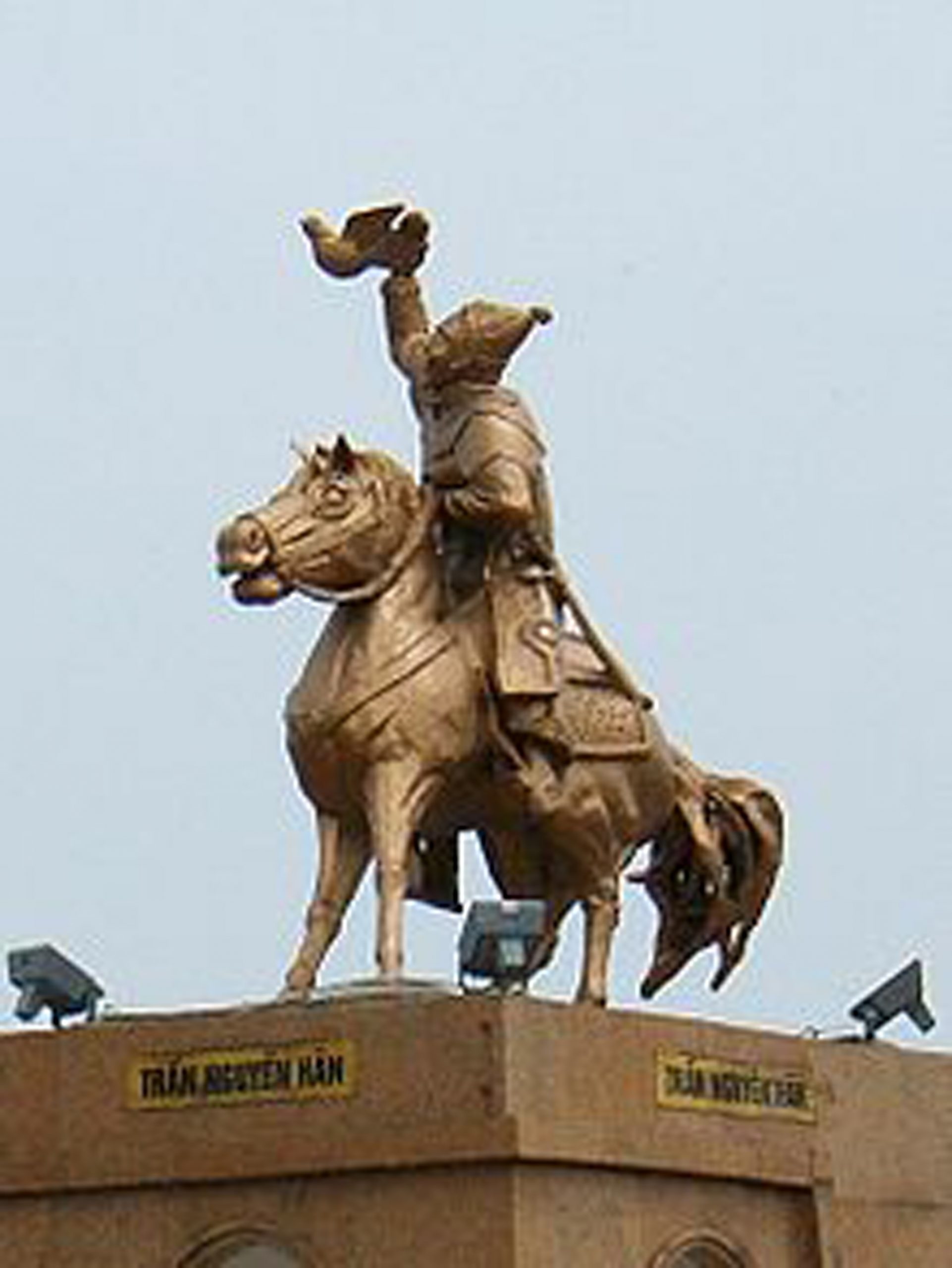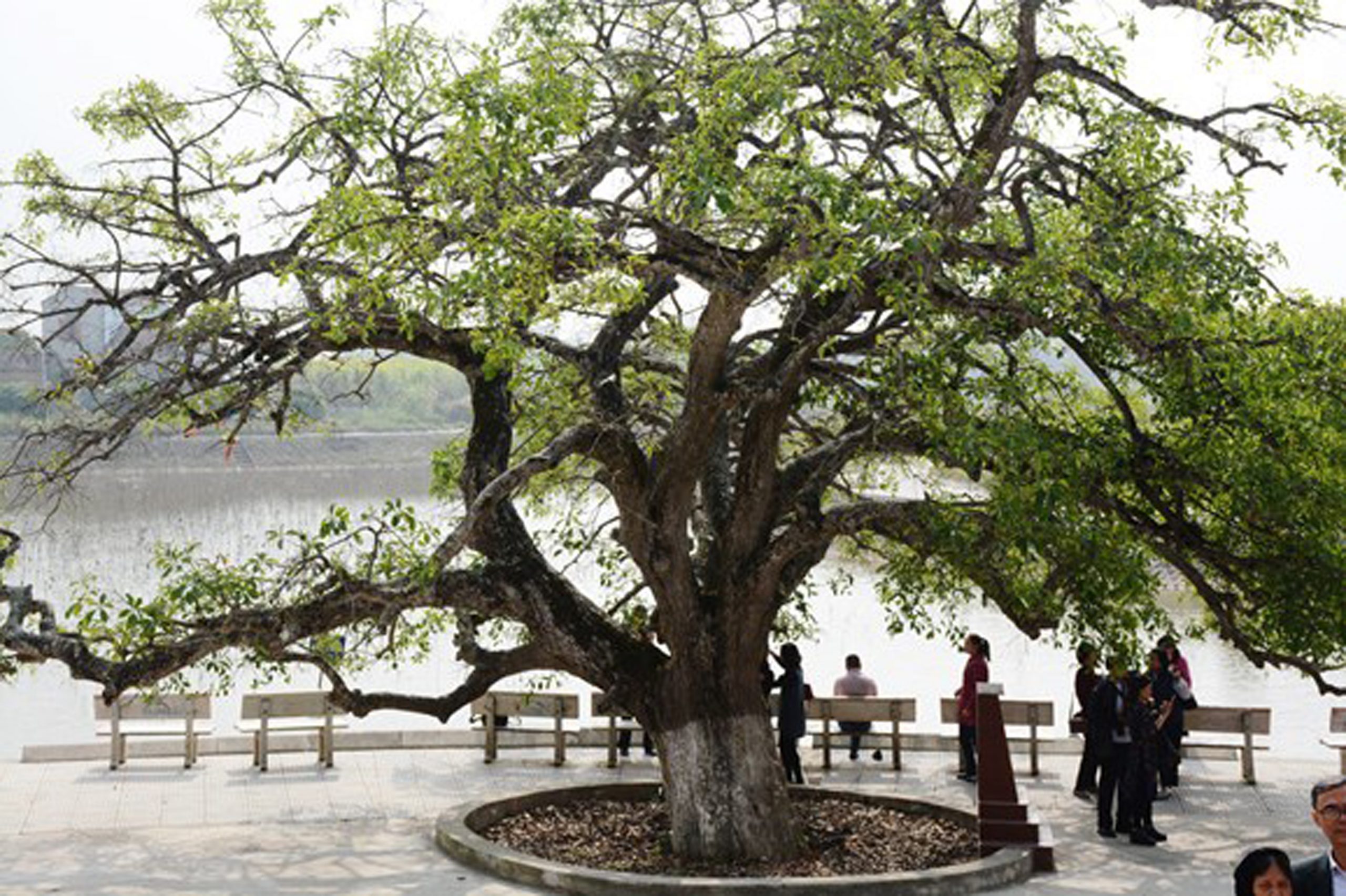Every season when the sesame buds are in full bloom, when coming to Son Dong, visitors come back to the temple of Ta General Quoc Tran Nguyen Han, light incense sticks to show their respect. Through many generations, the temple is still a living witness reminding the life of the loyal general, still boldly sacred, attracting many visitors.
Temple of Tran Nguyen Han – A place to commemorate the loyal general
Tran Nguyen Han temple, also known as Ta Tuong temple or Thuong temple, is an artistic architectural work built in the Later Le dynasty over 200 years ago. The temple is located in Da Cai village, Son Dong commune, Lap Thach district – a land considered a place with a long history and culture.
The temple worships Tran Nguyen Han – one of the leading nationalists and deities of the Le dynasty, who had many merits in the resistance war against the invading Ming army in the 15th century. Tran Nguyen Han (1386 – 1429), is the grandson of the Great Tutor Tran Nguyen Dan and the six-generation grandson of Chieu Minh Vuong General and Thai monk Tran Quoc Khai in the late Tran Dynasty.
He was born and raised in Da Cai village, Son Dong page (now Son Dong commune, Lap Thach district). Tran Nguyen Han was good at military tactics and was the one who directly participated in many battles with resounding victories such as the campaign to liberate Tan Binh, Thuan Hoa (August 1425), campaign Chi Lang – Xuong Giang (September). -1427).
After completely repelling the Ming invaders, Le Loi was crowned king (1428) and Tran Nguyen Han was given the title of General of the Nation. After he died because he was falsely accused of treason, people built a temple to commemorate his merits for the country.
Today, visitors can visit Ta General Quoc temple by many different ways. From Viet Tri city, go up to Lo river dike, pass Duc Uncle ferry, turn right and go straight along the dyke to Son Dong commune, Da Cai village. Or visitors can also go by train, from Bach Hac station go to Phu Hau wharf, cross the boat, go uphill along the edge of Phu Hau village, then turn right to Dong Mat village, go through Quan Tu village to reach Da Cai village. . Or many people choose to follow provincial road 305C from the center of Lap Thach district.
Temple of Ta Tuong Quoc was built on a flat land, wide and high, (the villagers called it Bach Ho position) it is said to be the place where Tran Nguyen Han’s old Palace was located. The temple is structured in the style of the word “Dinh” around with a wall surrounded to form a square “fill” campus and at the same time, it is in the style of the Nguyen Dynasty with smooth chisels and simple decoration.
The temple consists of 3 parts: the temple gate, the house of sacrifice, and the harem. The inner area was built completely and synchronously, including the main temple, ritual house, left house, organic house, incense burning floor, house with sharpening stone, garden, fence,… From the time of construction until Nowadays, the temple has been repaired many times and built more, mainly in the Nguyen Dynasty (1802-1945).
In the temple, there are some antiquities such as 2 diaphragms, 4 parallel sentences, 2 altars, 1 altar, 1 judgment letter, 2 wooden cranes, 2 wooden lamps, 1 wooden tray, 1 iron box. contains 13 ordinations, and 1 divine copy… all of them are unique and precious works of
art.Coming to the temple, visitors will feel the dignified, peaceful, quiet, touristic nature. Guests can return to the old historical years through the story of the life and career of Ta Tu Quoc.Regarding
the temple, the people of Shandong still tell each other about two ancient objects, the sword and the grinding stone. Sword of General Tran Nguyen Han It is said that, when the Ming army put the yoke of domination over our country, during a forest trip, Tran Nguyen Han found a long iron rod in Go Rach upland. This iron was sharpened into a sword on a large stone on the bank of Son pond.
Therefore, later the stone was called the sword sharpening stone. There is still a dent in the center of the stone from the test slash of his sword in the stone. Since then, the sword has followed Tran Nguyen Han and Nguyen Trai to Lam Son to support Le Loi to raise the flag of insurrection, creating an illustrious feat in 10 years against the Ming army until the day of victory.
Today, when tourists come to this temple, they still see the stone on which General Tran Nguyen Han used to sharpen his sword. The stone slab is about 2.49m long, 1.6m wide, 0.4m thick and weighs nearly 2 tons. The stone was found by the people here, picked up, and moved back to the temple grounds for everyone to admire the remaining vestiges.
Besides the sword sharpening stone, the year-round old sesame tree, reflecting in the semi-circular lake in front of Ta Tuong Quoc temple, is also an attraction for tourists. The tree is about 10m high, the trunk can’t be hugged by three people. According to tradition, the sesame tree was planted when people in the area built the temple more than 500 years ago. The tree is planted in a good soil, thanks to the nourishment of heaven and earth, through the years, it is still healthy, proving the undying prestige and ethereal character of Tran Nguyen Han.
Historical relics of the temple of Ta General Tran Nguyen Han have been preserved by the people for many years with a sincere heart. On the days of village parties, commemoration of the birth and death of Ta General National or the beginning of spring, thousands of tourists from all over the country have made pilgrimages here to commemorate the merits of this national hero.
In 1984, the Ministry of Culture (now the Ministry of Culture, Sports and Tourism) decided to rank the historical monument of Ta General Tran Nguyen Han’s temple as a national monument. In 2013, for the first time, Vinh Phuc Culture and Tourism Week was held and the incense offering ceremony commemorating the 584th anniversary of Tran Nguyen Han’s death at Ta Tuong Quoc Temple.
With the efforts of the locality, Tran Nguyen Han Temple and the relic complex of Son Dong commune are becoming one of the key cultural and historical tourist attractions of the province, attracting many tourists from all over the world.

